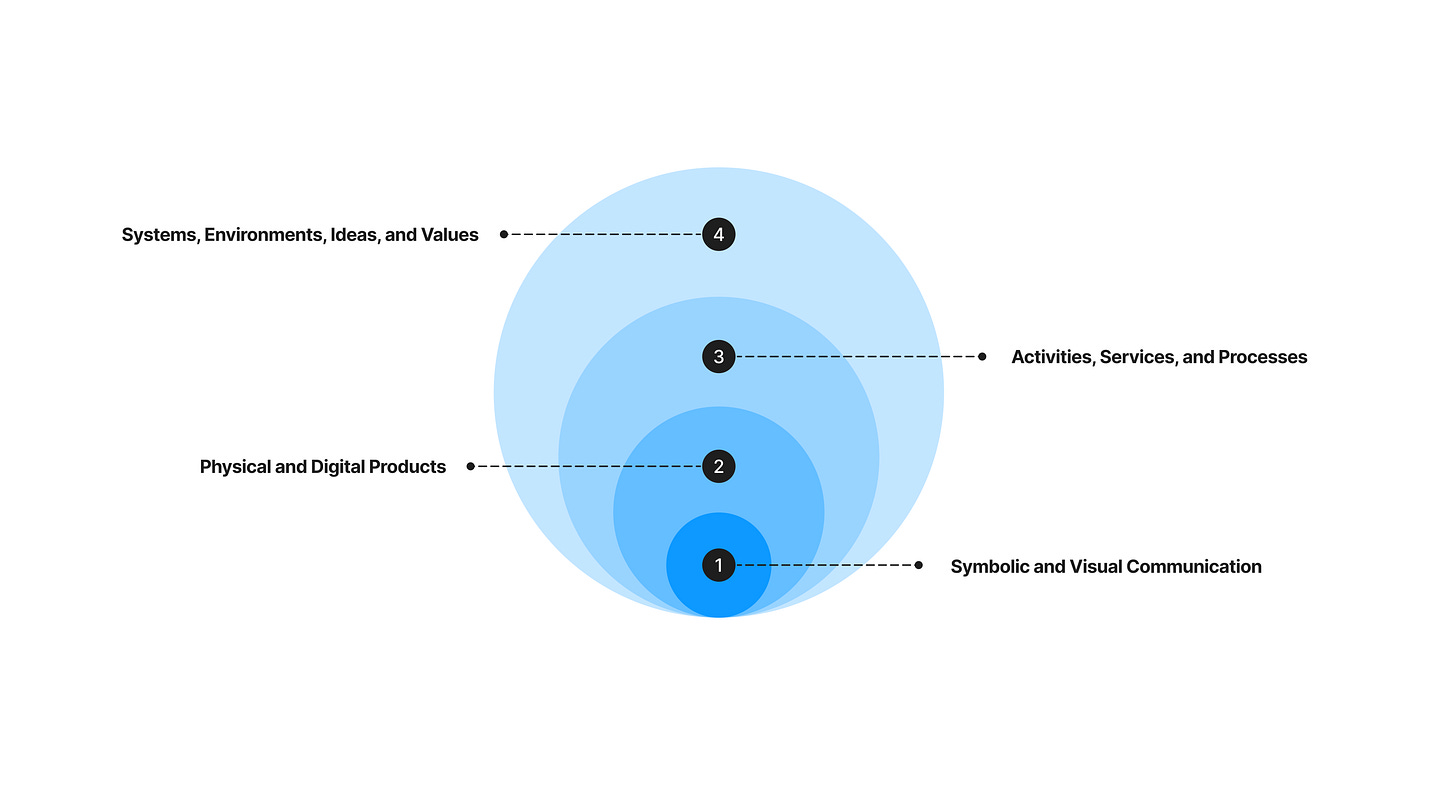Rethinking the Org Chart of Problem-Solving
Clarifying the Roles, Skills, and Value of Product Design in Organizations
In organizations where design maturity is low, the term “design” functions less as a discipline and more like a vague aspiration—something like “make it better,” without specifying what it is or what better means. This conceptual vagueness is a breeding ground for mismatched expectations and squandered talent. Design becomes a placeholder word, equally likely to summon requests for a new logo, a reimagined user flow, or a strategic overhaul of the business.
This is not a failure of design; it’s a failure to understand its topology.
Design isn’t a job title. It’s a mode of intentionality—of shaping form, systems, and behavior in service of a goal. But to say that design “solves problems” is about as informative as saying science “explains things.” The real question is: What kinds of problems? And perhaps more importantly: What kind of designer do you need?
Vasa Mihich, one of my more iconoclastic professors, once made a point that still rattles around in my head: design is not just in what you make; it’s in the path you choose to walk. Take the long scenic route, cut across the quad, or head straight to class—each one is a designed choice. In this framing, design becomes ambient: ever-present, intentional or not. The difference between good design and bad design, then, is just how conscious the choices were.
Which brings us to a deeper question: how do we structure the territory of design? One answer comes from Richard Buchanan’s Four Orders of Design—a model not just for understanding what design is, but for navigating where it operates.
First Order: Symbols and visuals—what you see. Graphic design, typography, logos, layouts.
Second Order: Physical or digital artifacts—what you touch. Product design, UI components, hardware.
Third Order: Interactions and flows—what you experience. UX, service design, process mapping.
Fourth Order: Systems and culture—what shapes the context. Strategic design, organizational change, governance.
These aren’t hierarchical levels; they’re interlocking modes of sensemaking. A good product designer, for instance, may reach into first-order typography while solving a third-order interaction issue. The trap arises when companies, unaware of these distinctions, conflate them—asking a visual designer to redesign a system, or a strategic designer to select icons.
To make this more useful, consider plotting design roles across two axes:
Tactical ↔ Strategic and Concrete ↔ Abstract.
A visual designer sits closer to tactical–concrete—making pixel-perfect artifacts.
A strategic designer operates in the strategic–abstract quadrant—mapping moves across quarters, not screens.
Service designers float in the middle—where abstract logic meets real-world execution.
This simple map, while imperfect, beats the default flatland most organizations start with: a single line item called “Design.”
The failure mode is always the same: mistaking surface polish for systemic change, or mistaking big thinking for implementation muscle. The result? Hiring the wrong expert to solve the right problem—or worse, trying to solve the wrong problem altogether.
Design isn’t a monolith. It’s an ecosystem of specialties, each tuned to a different class of problem. If you treat it like a Swiss army knife, expect lots of dull blades. But treat it like a toolkit—and know when to reach for which tool—and design becomes your sharpest edge.
In a world where every organization is drowning in complexity, this kind of clarity is no longer optional. It’s the difference between iterating meaningfully and spinning your wheels on beautifully crafted irrelevance.



